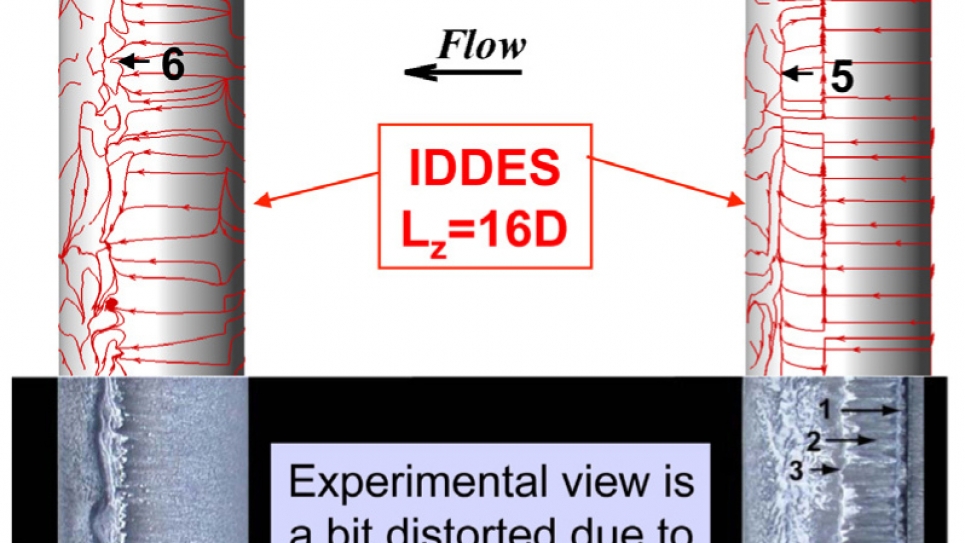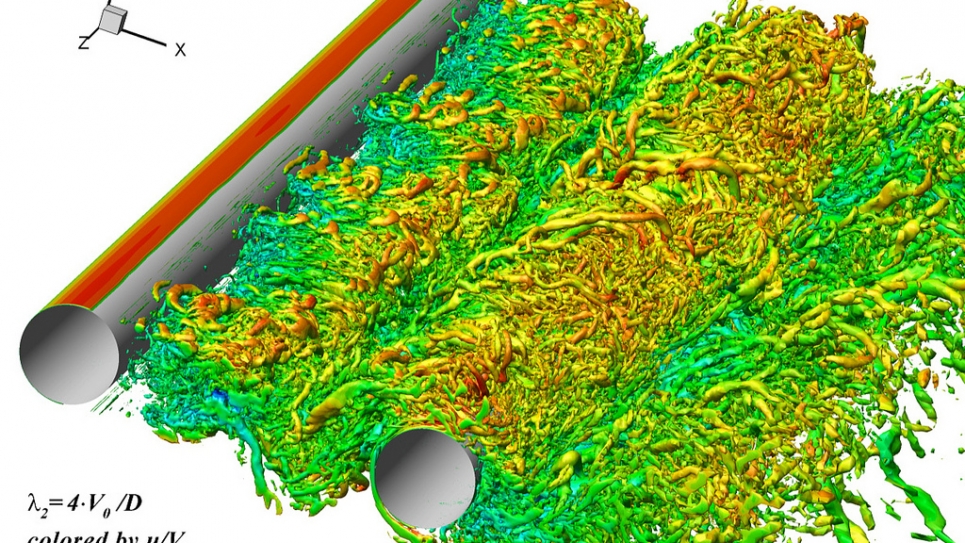
Improved Boeing IDDES: Delayed Detached Eddy Simulation (IDDES) of Turbulent flow over a Generic Aircraft Landing Gear
The flow past Tandem Cylinders is a prime test case for detailed comparisons between CFD and experiments, with particular focus on the physics of massively separated flows, the impingement of turbulence on a solid body, and the noise that results from this interaction. Such flow scenarios occur in a wide variety of applications that include (but are not limited to) aircraft landing gear, wind turbines, bridges, industrial heat exchangers, and a myriad of architectural situations. Very recently, researchers from Boeing and NTS (St. Petersburg, Russia) have computed, on the IBM Blue Gene/P at the Argonne Leadership Computing Facility, massively separated flows over tandem cylinders using a novel algorithm known as the Delayed Detached Eddy Simulation (DDES) and its variant, the Improved Delayed Detached Eddy Simulation (IDDES). This new approach to computing turbulent flows creatively blends Reynolds Averaged Navier-Stokes (RANS) computations in the near wall region (i.e., at the surface of the cylinder) with Large Eddy Simulation (LES) computations in regions away from the wall. The tandem cylinder simulations on the Blue Gene/P are among the largest, with a computational domain spanning sixteen diameters in the cross-flow direction. Experiments done at NASA Langley indicate that at this span-wise length, the lateral pressure and velocity correlations begin to approach zero, thereby justifying the periodic boundary conditions used in the numerical simulations.
The NTS code, that has been used for the simulations, is a structured, multiblock, overlapping grid, finite volume code. The range of numerical schemes implemented in the code includes implicit high order hybrid (weighted 5th order upwind/4th order centered) flux difference splitting schemes of Rogers and Kwak for incompressible flows and of Roe for compressible flows. Numerical implementation of these schemes is performed by implicit relaxation algorithms (Plane/Line Gauss-Seidel relaxation and Diagonally Dominant ADI algorithm), which may be arbitrarily specified by a user in different grid-blocks. In addition, the code is capable of running in hybrid (i.e., MPI+OpenMP) mode and shows very good weak scaling on the Blue Gene/P.
Director’s Discretionary Allocation:
11 Million Hours
